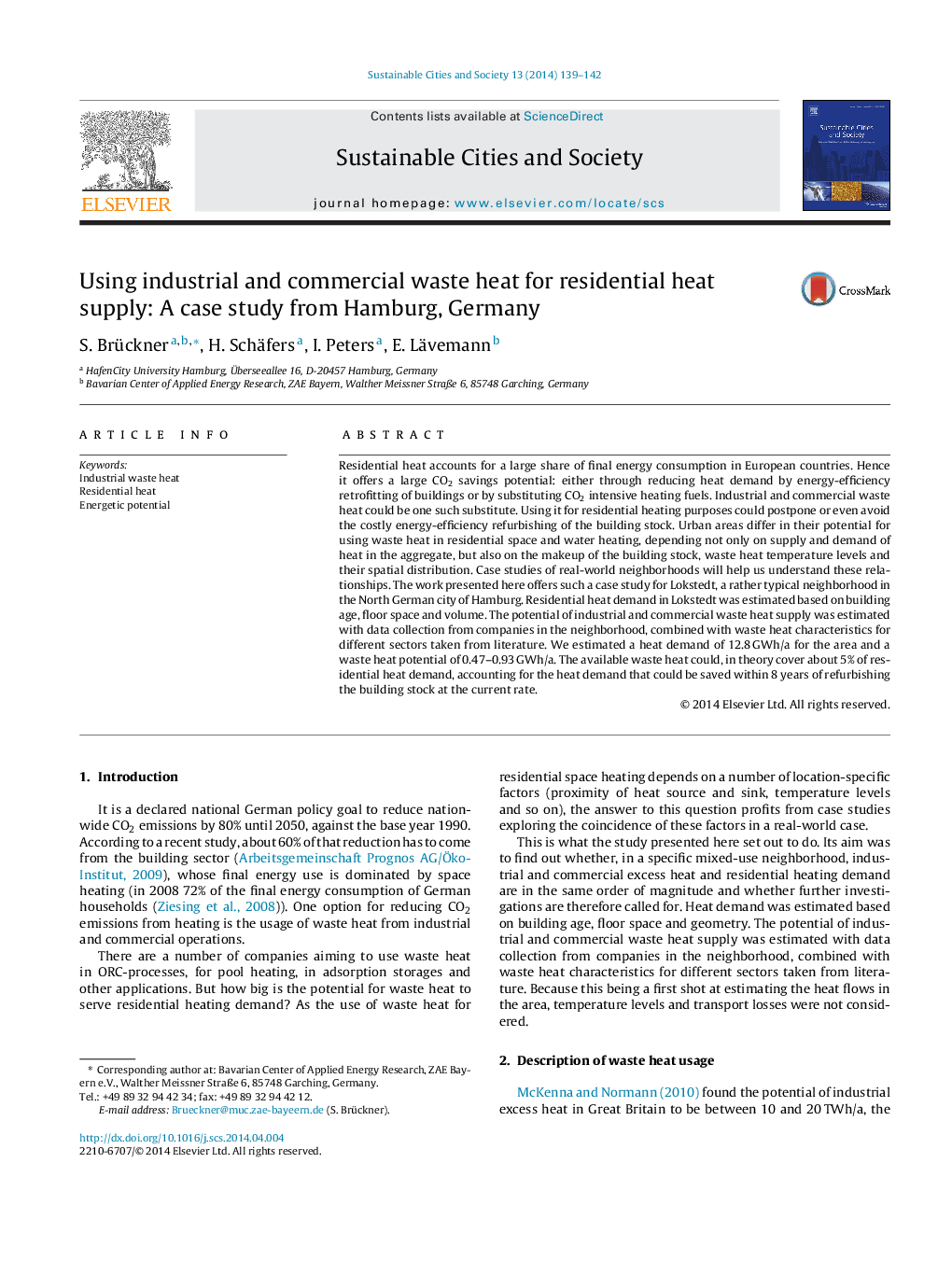| کد مقاله | کد نشریه | سال انتشار | مقاله انگلیسی | نسخه تمام متن |
|---|---|---|---|---|
| 308152 | 513529 | 2014 | 4 صفحه PDF | دانلود رایگان |
• Question: Is it possible to cover domestic heat demand by industrial waste heat?
• For the investigated area it is not possible to cover the entire demand.
• The results should be transferable to other regions and cities.
• Using the waste heat sources equals CO2 reduction of up to 8 years of renovation.
• These promising results justify further research.
Residential heat accounts for a large share of final energy consumption in European countries. Hence it offers a large CO2 savings potential: either through reducing heat demand by energy-efficiency retrofitting of buildings or by substituting CO2 intensive heating fuels. Industrial and commercial waste heat could be one such substitute. Using it for residential heating purposes could postpone or even avoid the costly energy-efficiency refurbishing of the building stock. Urban areas differ in their potential for using waste heat in residential space and water heating, depending not only on supply and demand of heat in the aggregate, but also on the makeup of the building stock, waste heat temperature levels and their spatial distribution. Case studies of real-world neighborhoods will help us understand these relationships. The work presented here offers such a case study for Lokstedt, a rather typical neighborhood in the North German city of Hamburg. Residential heat demand in Lokstedt was estimated based on building age, floor space and volume. The potential of industrial and commercial waste heat supply was estimated with data collection from companies in the neighborhood, combined with waste heat characteristics for different sectors taken from literature. We estimated a heat demand of 12.8 GWh/a for the area and a waste heat potential of 0.47–0.93 GWh/a. The available waste heat could, in theory cover about 5% of residential heat demand, accounting for the heat demand that could be saved within 8 years of refurbishing the building stock at the current rate.
Journal: Sustainable Cities and Society - Volume 13, October 2014, Pages 139–142
